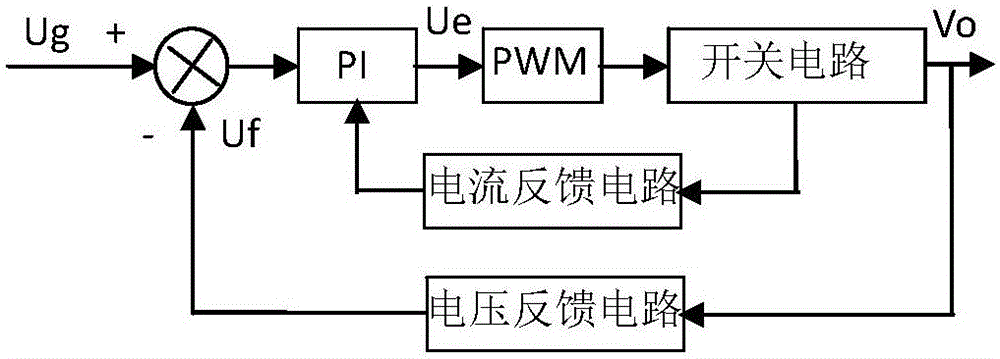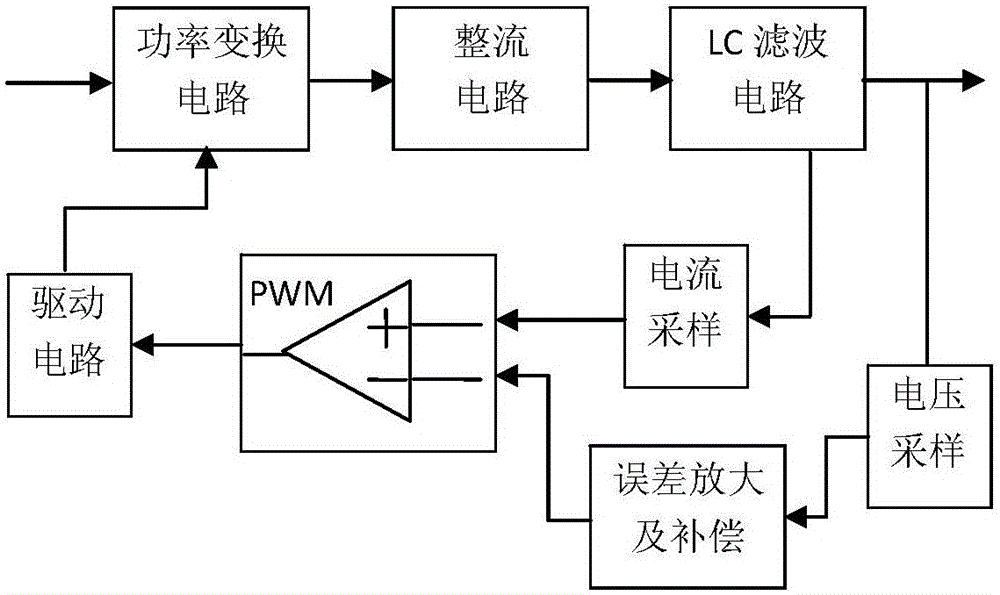Resonant converter
A technology of resonant converters and resonant capacitors, applied in instruments, converting DC power input to DC power output, adjusting electrical variables, etc., can solve problems such as affecting circuit stability, non-destructive testing, sampling current switching noise interference, etc. The effect of improving dynamic performance, increasing bandwidth, and increasing efficiency
- Summary
- Abstract
- Description
- Claims
- Application Information
AI Technical Summary
Problems solved by technology
Method used
Image
Examples
no. 1 example
[0035] Figure 4Shown is the circuit schematic diagram of the switching power supply circuit of the first embodiment of the present invention, a resonant converter including a rectification filter circuit 101, an asymmetrical half-bridge flyback topology circuit 102, a current sampling circuit 103 and a peak current control system In the circuit 104, the rectification and filtering circuit 101 includes a rectification bridge D3 and a first capacitor C1, where C1 is an input filter capacitor. The asymmetrical half-bridge flyback topology circuit 102 includes a first switch tube S1, a second switch tube S2, a resonant capacitor Cr, a first transformer T1, a second diode D2, and an output filter capacitor Co. The current sampling circuit 103 includes a first The resistor Rs, the second capacitor C2, the first diode D1, and the peak current control system circuit include dead time adjustment and peak current control.
[0036] The rectifier bridge D3 in the rectifier filter circui...
no. 1 example
[0037] The working principle of the switching power supply circuit of the first embodiment of the present invention:
[0038] Only using words to describe the principle will make it difficult for those skilled in the art to understand, so please allow the use of schematic diagrams to illustrate the working principle of the present invention in conjunction with the signal flow commonly used in electronic engineering.
[0039] The rectifier bridge D3 in the rectification filter circuit 101 rectifies the alternating current into pulsating direct current, converts the pulsating direct current into direct current through the input filter capacitor, and outputs it to the asymmetrical half-bridge flyback topology circuit 102; the current sampling circuit 103 passes the current of the resonant capacitor Cr shunt, and then convert the current signal into a voltage signal through the first resistor Rs, and the first diode D1 filters out the sampled negative current signal; the peak curre...
no. 2 example
[0049] Figure 7 It is the schematic circuit diagram of the second embodiment of the present invention. The difference from the first embodiment is that the connection of the diode D1 is different. The anode of the first diode D1 is connected to the series node of the first resistor Rs and the second capacitor C2. The first The cathode of the diode D1 outputs a current sampling signal to the peak current control system circuit.
[0050] The connection relationship of other components is the same as that of the first embodiment, and the circuit principle is also the same, which will not be repeated here.
PUM
 Login to View More
Login to View More Abstract
Description
Claims
Application Information
 Login to View More
Login to View More - R&D
- Intellectual Property
- Life Sciences
- Materials
- Tech Scout
- Unparalleled Data Quality
- Higher Quality Content
- 60% Fewer Hallucinations
Browse by: Latest US Patents, China's latest patents, Technical Efficacy Thesaurus, Application Domain, Technology Topic, Popular Technical Reports.
© 2025 PatSnap. All rights reserved.Legal|Privacy policy|Modern Slavery Act Transparency Statement|Sitemap|About US| Contact US: help@patsnap.com



